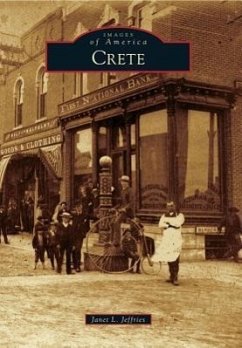Late-19th-century publications regularly promoted Nebraskas young cities and towns, and Crete was no exception. Settled by homesteaders, merchants, railroaders, and New Englanders associated with Doane College, Crete began as an agricultural trade center, but it soon possessed the refinements of gentility and city culture. One 1890s booklet described the 20-year-old town, with a population of 3,000, as a modern, cosmopolitan, progressive citytraits that few places of similar size in the West could claim. A newspaper article exclaimed, No city in the West has attracted more attention among Easterners than Crete and that no other city had a more promising future. Another article called Crete the gem of the Blue River valley. Situated 25 miles from Nebraskas capital city of Lincoln, Crete already had electricity, running water, a college, churches, a library, and numerous businesses and industries by the late 19th century. The photographs within provide a glimpse into the past life of a town that has continued to evolve and thrive.
Hinweis: Dieser Artikel kann nur an eine deutsche Lieferadresse ausgeliefert werden.
Hinweis: Dieser Artikel kann nur an eine deutsche Lieferadresse ausgeliefert werden.








